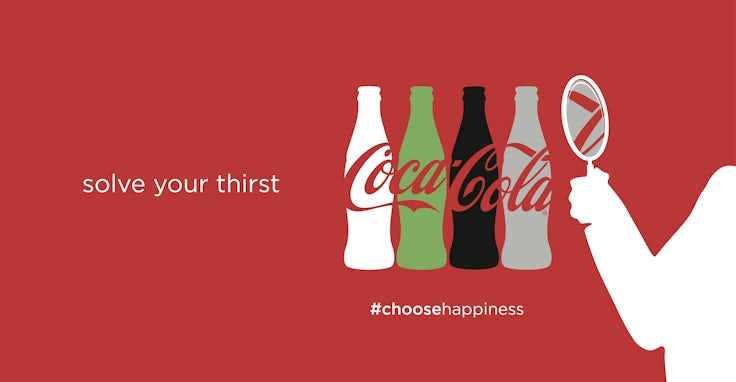Four tips to launching ecommerce sites abroad
Global commerce is a more accessible and attractive opportunity than ever for both big and small companies thanks to online sales channels, but ham-fisted translations and a failure to adapt to local markets can ruin reputations and lose brands substantial business.

All brands like to believe that the world is their oyster, and that global expansion is easier than ever thanks to the growth of online channels and the crumbling barriers to international trade. Yet expanding into new territories also brings with it practical challenges that, if not addressed, can scupper a brand’s attempts to generate sales and affinity with customers abroad.
Top of this list of potential headaches is localisation of campaigns and websites. While this may seem like a relatively simple task, marketing folklore is littered with examples of big brands that have failed to translate their marketing communications properly and have consequently dented their efforts to make the right impression.
Avoiding embarrassment
One of the most famous examples is pen brand Parker. When it launched in Mexico it ran an advert that was supposed to carry the line ‘It won’t leak in your pocket and embarrass you’. However, the brand’s translation wrongly used the Spanish word ‘embarazar’, which means ‘impregnate’ rather than ‘embarrass’.
As the benefits of globalisation encourage businesses to expand at greater speed, such errors are likely to trip up a growing number of brands. Fruugo, an online shopping portal serving 23 countries, signed up translation agency Conversis earlier this year to help it avoid such problems. The company operates out of only two UK offices, so having an effective, centralised means of producing accurate translations is a crucial element of its business model.
In addition to translating its site into all the necessary destination languages, Fruugo creates translated FAQ (frequently asked questions) pages and other articles that take account of cultural differences and consumer behaviours in each market. The company also seeks to hire multilingual customer service staff within its UK call centre to help deal with enquiries.
“Fruugo is synonymous with global shopping across the world, so we have to localise our brand,” says CMO Glen Richardson. “One of our big challenges is to train our personnel to support more customer service queries in an ever growing language base.”
Translating the online experience
Translation extends to how products are presented on the site. This includes displaying prices in the local currency, so that there are no hidden foreign exchange fees, and offering localised payment options. “Not every country is Visa or MasterCard-centric,” notes Richardson.
“Many countries may have payment methods you have never heard of. [Ecommerce payment system] iDEAL in the Netherlands, for example, is very prevalent and popular. It is almost the case that if you don’t accept that, you’re out of the game and there’s
no point opening a website in that country.”

Conversis director Russell Goldsmith claims that a surprisingly high number of brands are using free, basic tools such as Google Translate to translate their websites and other marketing assets. He suggests that literal translations of phrases or slogans are often inappropriate and that brands should employ linguists who have a detailed understanding of the cultural differences and colloquialisms that are relevant to each territory.
“If you’re claiming that you care about your audience in that local territory, then you could end up making things worse for yourself because anyone who speaks that language will see that it’s been automated and that it’s not perfect for their language,” he adds.
“It’s almost as though you’re treating them like second-class citizens by saying ‘we spent time on our English website, but this is good enough for you’.”
Given the huge amount of content that brands now produce across online channels, translation is an ever-growing logistical challenge. A strong network of regional offices can help brands to tailor their social media and online video output to the right markets, but smaller companies may resort to using the same content with only limited levels of localisation.
Even selecting visual assets can prove problematic if marketers fail to account for local differences. Sexualised advertising imagery is considered inappropriate in numerous cultures, for example, including predominantly Muslim countries in the Middle East.
Localisation through personalisation
Brands are increasingly seeking to fine-tune their localisation strategies with the aid of technology. This month, outdoor apparel maker Helly Hansen revealed that it has grown sales in some countries by using geo-targeting technology to localise its website.
Working with personalisation agency Monetate, the company pairs local weather forecasts with specific on-site experiences. When rain was forecast over a five-day period in Germany, for example, the brand used geo-targeting to present a rainwear banner on the homepage, rather than promoting winter ski-wear. This resulted in a 52% uplift in conversions.
Helly Hansen also localises product descriptions where possible. ‘Trousers’ and ‘jumpers’ in Britain display as ‘pants’ and ‘sweaters’ in the US, while the company adds a small banner on its website in non-US markets to highlight that shoe sizes are displayed in American sizes. This has helped to reduce the number of returned shoe purchases, the brand claims.
“Now that we know the power of personalisation, we want more,” says Ragnhild Geissert, European ecommerce manager at Helly Hansen. “The only limitation we have is the number of people we have to develop and drive new tests and campaigns. The impact has been a revelation.”

Beyond the digital realm, marketers need to consider how they can create consistency across all physical manifestations of their brand. In April, car marque BMW was named the world’s most reputable brand after it came top of the Reputation Institute’s Global RepTrak study, which measures the reputation of 100 major brands across 15 countries.
Responding to the result, BMW’s head of corporate communications Bill McAndrews acknowledged the role of digital channels but added that “face-to-face interaction is an integral component in maintaining a strong corporate reputation”.
The company works with brand implementation agency Principle, which seeks to provide a consistent execution across all BMW showrooms globally. This covers every detail including signage, layout, furniture, point of sale solutions and virtual product presentations.
Principle’s head of business development Max Spiegelberg believes the pressure to achieve consistency is mounting as the rapid growth of smartphones and social media make it easier for consumers to point out poor brand executions in different localities. “Everyone can broadcast their opinions and images of their brand experiences around the world,” he notes. “That has ultimately led global brands and large corporations to realise that the expression of their brand is incredibly important.”
Take a practical approach
Local market conditions often require marketers to think laterally and work flexibly in order to achieve the right brand execution. Spiegelberg explains that in certain African countries where mobile usage is growing rapidly, telecoms brands have created stencils so that shop owners can quickly and easily paint their logos onto their shops. This helps to get around the lack of sign printing facilities in these countries. He advises: “Marketers need to think about how they can adapt to different situations without compromising the integrity of their brand.”
To help manage the pressing challenges of localisation, Carlsberg Group announced last month that it will begin using the Adobe Experience Manager Asset Module – a centralised, cloud-based platform (see case study, below). The beer company has 140 brands in more than 160 markets, so it hopes the system will help it to better co-ordinate its supply chain and manage its marketing assets across different localities.
Meeting local requirements while retaining strategic control from the centre is a common goal for all international brands. Regardless of how they achieve this balance, marketers must give careful thought to how their brand translates overseas, both online and offline.
In the case of Carlsberg, group marketing technologist Martin Majlund believes that by using a centralised platform, his company can better tailor its marketing to different territories.
“All our brands can share and publish content and assets from their packaging, TV and social channels, making it easier to cater for cultural nuances, while also allowing for content to be reused,” he explains.
Carlsberg
Brand localisation is a particularly acute issue for Carlsberg, which owns 140 brands and operates in over 160 markets. Last month, the beer company launched a global digital platform called Pegasus that it claims will rationalise its supply chain and reduce the cost of managing all its digital branding assets including labels, videos and designs.
Pegasus is powered by the Adobe Experience Manager Asset Module – a cloud-based system that will integrate with Carlsberg’s other digital functions including websites, ecommerce and social media.
Carlsberg states that its adoption of the technology is the result of acquisitions and internal structural changes in recent years. It believes the platform will enable it to localise marketing campaigns with greater efficiency and approve brand executions in different countries at greater speed.
“We create fantastic assets around the world every day, but we haven’t had a place to share what we do,” explains Martin Majlund, Carlsberg group marketing technologist. “Until now, we have stored the assets from all brands in different places at local agencies, and local servers at acquired breweries. It has been difficult to get hold of assets to reuse.”
Majlund claims the platform will provide Carlsberg with better data on the performance of its digital marketing assets and on which assets work best in different markets.






